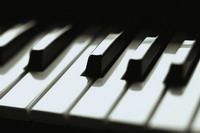Piano Sheets > All Saints Sheet Music > Never Ever (ver. 2) Piano Sheet
Never Ever (ver. 2) by All Saints - Piano Sheets and Free Sheet Music

About the Song
Other avaliable versions of this music sheet: Version 1 Version 2 Version 3 Version 4 Version 5 Version 9
"Never Ever" is a song by All Saints, released as the second single from their debut album, All Saints. It became a very successful worldwide hit and was the first of five #1 singles in the UK for the group. (See also: 1998 in British music). The single was released in the United States on July 7, 1998 with a new music video. It is also the band's most successful single to date.
The single reached #4 on the US charts. A total of 1,263,658 copies of the single were sold in the UK, making it All Saints' biggest hit; 770,000 copies were sold before it became #1 which makes it more than any single ever before in the UK chart history. All Saints won two BRIT Awards for this single in 1998: Best Single and Best Video.
The music of the song is based upon an overlay of Amazing Grace which according to Ger Tillekens is the reason why it became so successful. Even though the lyrics are very different and the music sounds different, it is based on a familiar and popular song.
Download this sheet!
About the Artist

Random article
Piano notes and music reading No language is easy to learn except for our mother tongue. Mother tongue is a language which we start learning as soon as we are conceived. But learning some other language can be difficult if you are really not into it. Piano Notes are written in a completely different language. Agreed that the characters in the piano notes are very artistic and beautiful but they are equally strange to beginners and newcomers. But here is one interesting fact. Learning music reading from a piano notes music sheet is not a very difficult task. Actually it is much easier than learning a foreign Asian language like Chinese. Memorization and repetition are the two main ingredients for success in mastering the language of piano notes. So realistically speaking, once you are done reading the basics, all you have to do is practice the language as much as you can. To say in a very classical tone, practice till each and every note starts running through your veins. (More...)
